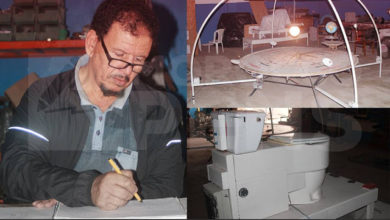Tech
How to Buy Used Electronics
We buy used cars, furniture, and sometimes clothes but buying used electronics may be the riskiest of all. They do not have a valid warranty, may be defective, and may not work as long as newer ones. Still, buying used electronics may save you money and help reduce environmental waste. Fortunately, you can come out on top if you ask the right questions and take the following steps.
-
Research the product itself. Some products last a long time and have lots of life left, some do not last as long, for instance they might have an expensive rechargeable battery that cannot easily be replaced if it has worn out. Products with mechanical parts are also more prone to wearing out. If the product has software check that this is still supported by the manufacturer. This may or may not matter depending on the device. For instance a device like a smartphone that depends on apps will be more likely to become obsolete sooner than a washing machine where the software never needs changing.
- In addition, there are versions of particular products that may have a known fault with them.
- Read online reviews. You can ask the owner questions to see if the product has these problems. For example, some devices may have several complaints about the handle coming off, or maybe the unit overheats when it sits idle for a few minutes. Look closely at the used device in person, if possible, to see if these defects are present. Usually, preliminary research will tell you what to look for.
- When reviewing, ask, “What does the device come with if I buy it new?” This way, you will know if there is anything missing, and the price should be adjusted to reflect any missing components or documentation.
-
Become familiar with the lingo. A refurbished product hasn’t necessarily been used; it may have been sent back to the manufacturer for a cosmetic reason, fixed accordingly, and sold as refurbished (often with a manufacturer’s warranty). A reconditioned item, on the other hand, has been used and fixed up; they usually come with a warranty from the company who’s selling it, but not from the manufacturer.
-
Ask about who fixed or refurbished the product. If the manufacturer did it, then there is less risk involved than if it was done by a third party. You might also be able to find out what about the product was fixed or changed.
-
Make sure the product comes with a decent warranty. If you are buying from a retail chain or other reputable sellers, chances are that some sort of warranty is available. Find out how long this lasts and what it covers. Can you buy additional coverage? If so, for how long and how much does it cost? Even if you choose not to buy the extended warranty, the fact that it is offered might suggest the company or manufacturer’s confidence in the product. A shorter warranty (about 6-months and under) could show a lack of confidence in the product.
-
Ask about return and exchange policy. Most reputable places will not even ask questions if you return a product within a month or so.
-
If possible, test the product before buying it. If you are buying from someone besides a retail chain, this is especially important. While this will not guarantee that it will not break later, it at least makes sure that you have a current working product.
-
Hold on to any receipts or paperwork you received. You will need a valid warrant to receive a repair or replacement. This is especially important if you are paying with cash. Receipts can prove that you purchased it and when. Keep your receipt in a safe place. You never know when it can come in handy.


